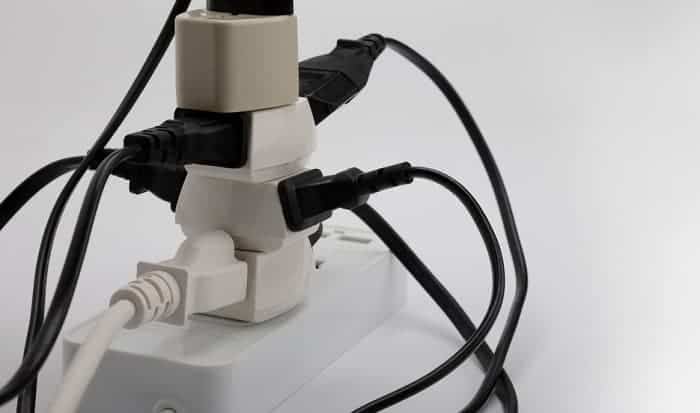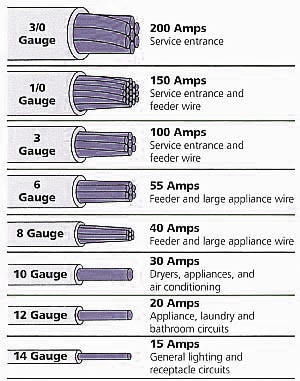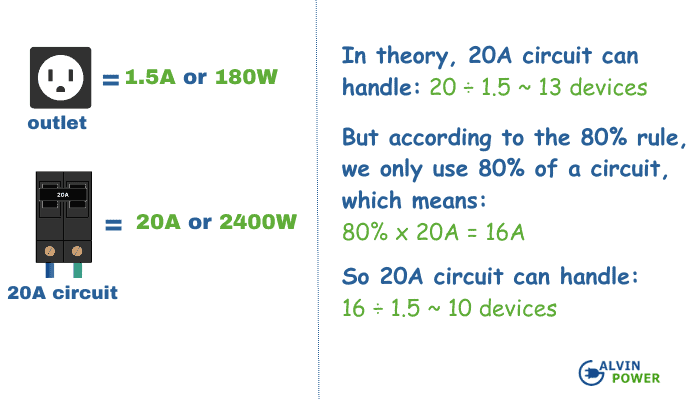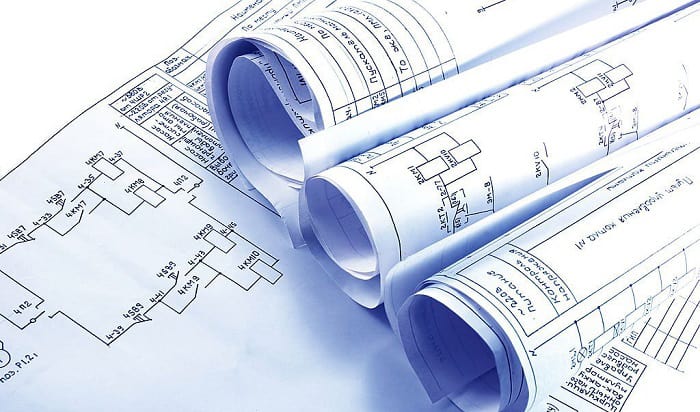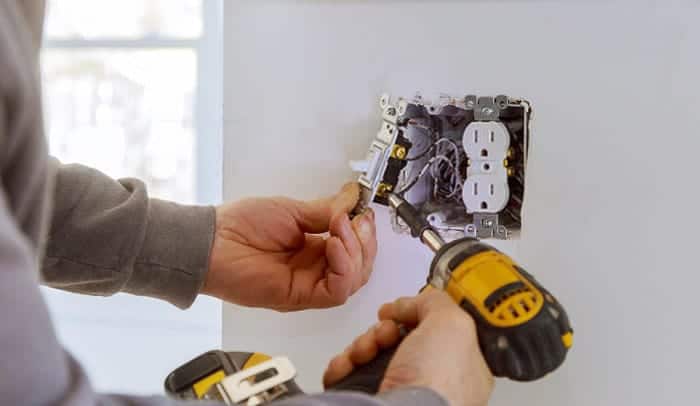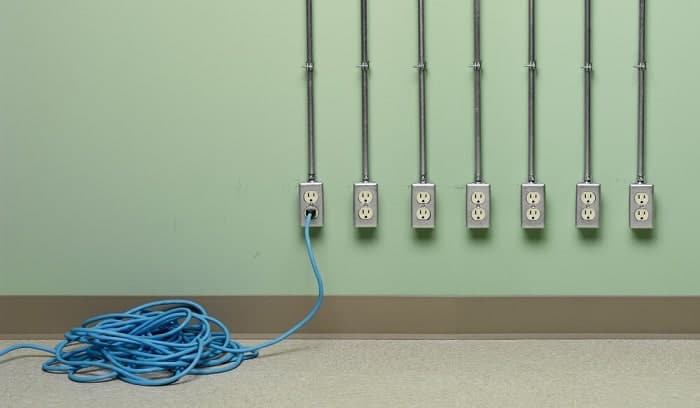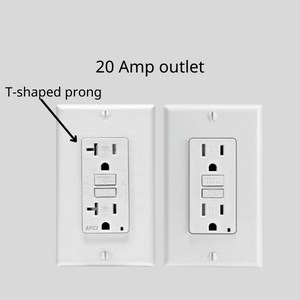Do you have concerns about the number of outlets connected to your circuit? Do you feel like they’re going to overload while you run multiple appliances at the same time?
Today, we’ll discuss how many outlets on a 20 amp circuit are best for ensuring your daily power consumption safety. Although the National Electric Code (NEC) doesn’t directly rule on limiting outlet installments on your circuit, it is crucial to learn its power draw restrictions.
In general, you should have a maximum of 10 outlets on a 20A circuit. To find out why, continue reading.
Table of Contents
The 20-Amp Circuit
A typical circuit of 20 amperes (amp) is enough to power a bedroom or two. It is a common amp rating used in devices such as outlets and overhead lights, along with a 15-amp circuit. Different amps suit different wire sizes.
The 15-amp Circuit, for example, is compatible with a 14-gauge wire. On the other hand, a 20-amp circuit with a 14-gauge is pretty unconventional and prone to overloading, so it is better to use a ten or 12-gauge wire size.
When a circuit has a rating of 20-amp, it doesn’t mean that the current flow is 20-amp. This measurement is just an indicator for knowing the amount of power that can safely pass through the circuit.
Now, when it comes to the number of outlets or receptacles you can place on a 20-amp circuit, you can put as much as you want. It is better if you have multiple outlets to have an even power distribution.
However, the power draw of the numerous outlets you’ve installed could cause the wires to overheat and result in a tripped breaker or fire hazard. Whether you or a paid electrician laid out your home plan’s electricity, it should have well-designed load management.
How Many Outlets on a 20-amp Circuit?
A single outlet has a maximum power draw of 1.5 amps or 180 watts, while the 20-amp circuit with 120V can reach its peak with 2400 watts.
Theoretically speaking, you can put 13 devices to get the most out of the 20 amperes of circuit power (1.5-amp × 13 devices = 19.5 amps), but this is a big no-no in practical terms.
Doing this practice won’t allow other devices to get enough power they need to start up. A circuit that’s 90% occupied can make the breaker constantly trip. Due to this problem, NEC advises limiting the circuit and breaker load to 80% or less.
This 80% rule is necessary because unexpected power surges from big appliances will consume the remaining 20%, which is used as a “free space” in the circuit.
With that regulation, 80% of a 20-amp circuit is 16-amps or 1920 watts on a 120V system, so to comply with that restriction, you should only have a limit of ten receptacles on a 20 amp circuit (16 amps ÷ 1.5-amp = 10.67 devices).
How Can I Properly Manage My Outlets?
A receptacle won’t draw current unless you plug something into it. But if you’re planning to max out the ten electrical outlets limit for every 20-amp circuit you have in the house, that’s where things can go wrong.
It would be best to remember that not every area or circuit consumes power equally because not all appliances are the same. The kitchen and bathrooms are areas you can regard as heavy power consumers.
If you’re not too careful and put a single 20-amp circuit for both the kitchen and the bathroom, the wires can overheat and inflict electrical damages. What’s best is if you put together a layout plan before installing your outlets.
Make a Layout Plan
Start by merging your lights to one circuit only because the power drawn by the lights is a lot less compared to any other plugged devices, so it’s safer that way.
In terms of a 20 amp circuit in a kitchen, the dishwasher and electric stoves should have dedicated outlets. It is wise to divide outlets in your kitchen into two separate circuits while adding some lights to avoid breaker tripping and achieve a balanced electrical load.
In bedrooms, there is a general principle where every wall should have an outlet installed. You can also have the same method by putting an outlet for every 6-feet. One 20-amp circuit for all the lighting and outlets for a bedroom will work just fine.
Keep in mind that no matter how many outlets you’ve installed in your circuit, it is likely that only an outlet or two is used at the same time. My advice is to install outlets within the 20 amp Circuit NEC guidelines and spread them in areas that are easy to reach.
What is the Best Type of Outlet for My Circuit?
First and foremost, a good outlet should follow the local and national electrical codes. Not only that, but you should also think about what kind of plug your electrical device has.
It is easy to identify an outlet if it’s 15 or 20 amps. Although both look nearly the same, the 20 amp outlet is distinctive because one side has a T-shaped hole made for 20-amp plugs. On the other hand, 15-amps have two standard plug holes as usual.
In most residential areas, you can find a 15-amp and a 20-amp receptacle. The 15-amp outlet is good for the average household accessories such as lamps and chargers, while the 20-amp outlet is best for heavy-duty appliances like power tools in your garage.
These two outlets can both connect to a 20-amp circuit. However, just like I said earlier, a 20-amp circuit’s wiring (12-gauge) is thicker than a 15-amp’s (14-gauge). Because of this wiring situation, it is best to keep an eye on outlet and circuit incompatibilities.
If you currently have a 15-amp circuit, do not buy a 20-amp outlet. A 20-amp circuit, however, can have a 15-amp outlet, and you won’t have a problem — this method is used commonly in most homes.
The best example of a 15-amp outlet is BESTTEN Wall Receptacle Outlet, and an example for 20-amp outlets is Leviton CR20-W Duplex Receptacle. Although 15-amp outlets are affordable and cleaner-looking, 20-amp outlets are better for most electrical devices, especially the ones that require a lot of energy.
Do I Need to Upgrade My 15-Amp Circuit Into a 20-Amp?
Now that you know the difference between a 15-amp and 20-amp Circuit, you might want to upgrade your old 15-amp into a 20-amp. But before you jump into that action, examine the electrical performance of your house first.
There are multiple reasons why your current breaker keeps tripping. Possible factors are a short circuit, overloaded circuit, or an old/damaged breaker.
On the flip side, let’s say that you’re clear from those problems, and your breaker is just too minimal for the load your appliances need. If that’s the case, your house’s total current exceeds the 15-amp rating of your circuit breaker.
If you have a circuit breaker with a lower amperage rating than the circuit, you need to upgrade to a higher rating.
It is OK to do so, but make sure that a professional electrician will take the job. If you Do-It-Yourself and change your breaker without the attendance of a certified repairman, you’re putting yourself and your property in grave danger.
This video from Flannel Guy DIY could help you understand better the number of receptacles or outlets needed on a 20-amp circuit:
Conclusion
The answer to the question how many outlets on a 20 amp circuit are ten outlets. Always comply with the 80% circuit and breaker load rule, allowing a maximum load of 1.5 amps per receptacle.
Remember that your circuit, wire sizes, and outlets must be compatible to avoid overheating and electrical hazards. Also, spread your multiple outlets of a single 20-amp circuit around the house wisely.

I am Edwin Jones, in charge of designing content for Galvinpower. I aspire to use my experiences in marketing to create reliable and necessary information to help our readers. It has been fun to work with Andrew and apply his incredible knowledge to our content.

